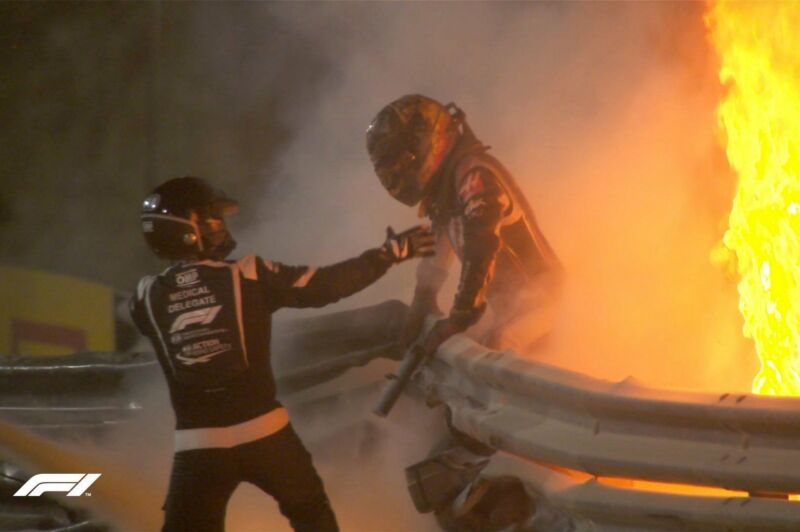
Why racing drivers trust their lives to a fireproof fabric called Nomex
Today’s gear is lighter, brighter, more comfortable to wear, and protects longer. …

reader comments
68 with 58 posters participating, including story author
When Romain Grosjean’s F1 season came to a spectacular end in Bahrain a few weeks ago, it was the fire that really drove the headlines. High-G crashes aren’t necessarily common in the sport, but they happen once or twice a year and, thanks to rigorous design and testing, are highly survivable. An F1 car bursting into flames is a much rarer event—Grosjean’s fiery crash is the first for over 30 years, and the sight of flames strikes a kind of primal fear, bringing to mind drivers like Roger Williamson and Niki Lauda.
Just about everyone who straps into a racing car—regardless of discipline or series—does so wearing layers of a synthetic fabric called Nomex. It was designed in the late 1950s for DuPont by scientist Wilfred Sweeney, and DuPont has manufactured Nomex commercially for a little over half a century. The material’s introduction to the world of motorsport began in 1966, when racing driver and safety advocate Bill Simpson met astronaut Pete Conrad, who introduced him to Nomex. The following year, Simpson’s company supplied Nomex overalls to all but three drivers in that year’s Indianapolis 500.
Fire protection for drivers has come a long way in 53 years, and I got in touch with Yves Bader, development manager of mechanical protection and consumer apparel at
Continue reading – Article source




